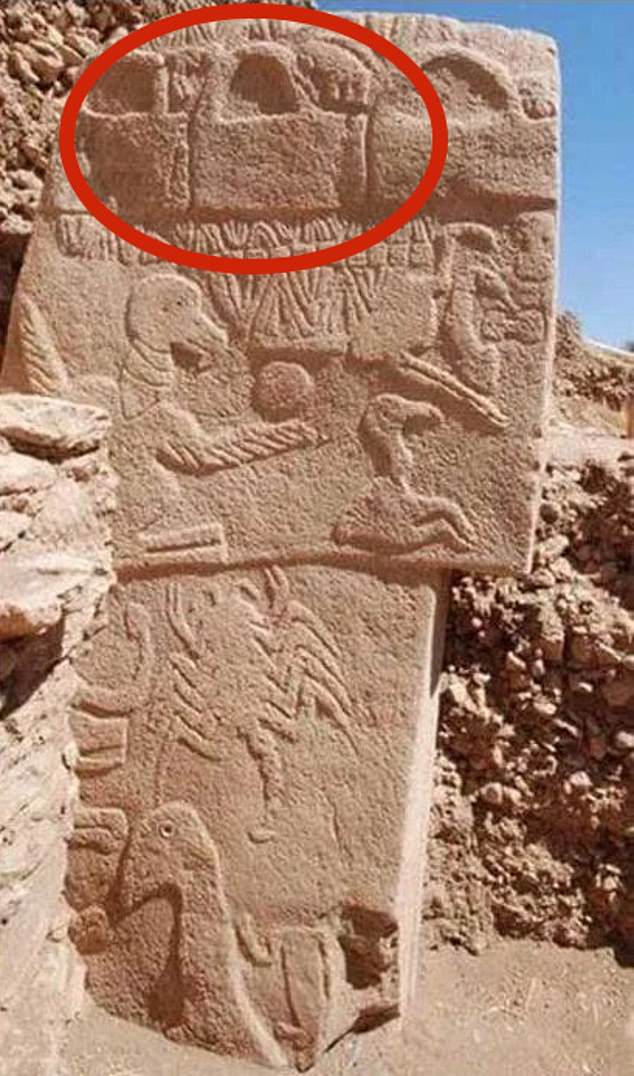Women’s relationship with handbags can be traced back thousands of years.
Researchers have discovered ancient wall carvings depicting what appeared to be handbags designed with a square box and a short, half-circle handle.
Some date back 12,000 years, before makeup, perfume and hairbrushes.
The first images were discovered in Turkey among the ruins of Göbekli Tepe, an ancient megalithic temple, which featured large stone pillars with engraved pockets.
Researchers have discovered the same design in Mexico, Iraq and parts of South America, raising even more questions about the motif’s meaning, specifically how distant civilizations imagined the same object.
The first images were discovered in Turkey among the ruins of Göbekli Tepe, an ancient megalithic temple, which featured large stone pillars engraved with pockets.
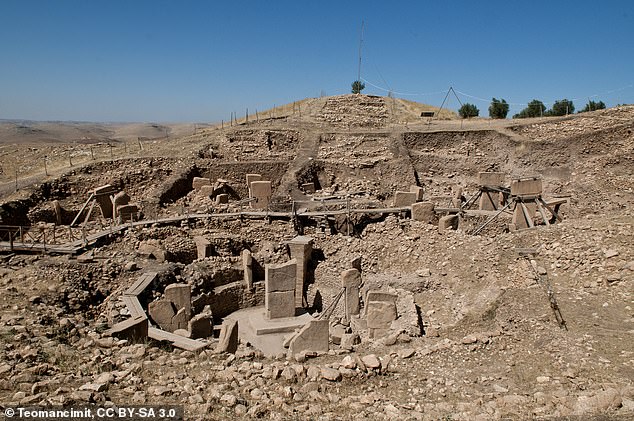
Göbekli Tepe was built in 9000 BC and features large T-shaped stone pillars arranged in circles that were probably used for social and ritual events.
Although the images are almost identical to those of modern bags, experts have suggested that many of the images are of baskets.
But some have also argued that the idea of a handbag could have been created by ancient civilizations.
The first modern handbag was designed in 1841 in England by Samuel Parkinson, who needed a travelling case for his wife where she could carry her belongings that were too large for a handbag.
Since then, the accessory has become a must-have fashion item among both women and men.
The most expensive bag in history is the Mouawad’s diamond bag from 1001 nights worth $3.8 million
Göbekli Tepe was built in 9000 BC and features large T-shaped stone pillars arranged in circles that were likely used for social and ritual events.
Some of its structures feature what appear to be items of clothing, belts, loincloths and bags.
While experts do not know exactly what the motifs mean, they have theorized that ancient humans saw the design in relation to the cosmos, Living Mint reported.
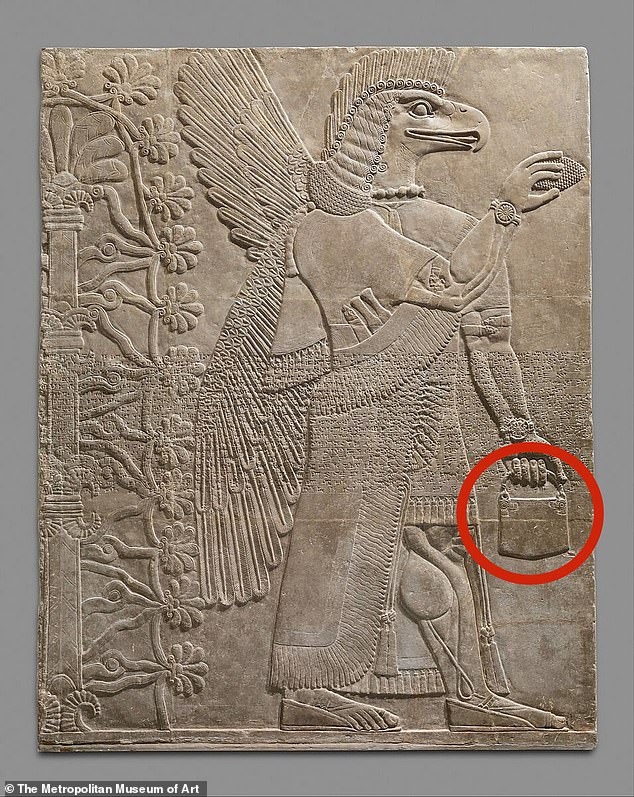
Archaeologists made similar discoveries in Iraq when they uncovered the Winged Genius Relief in 1846, a relief that was in a palace between 883 and 859 BC.
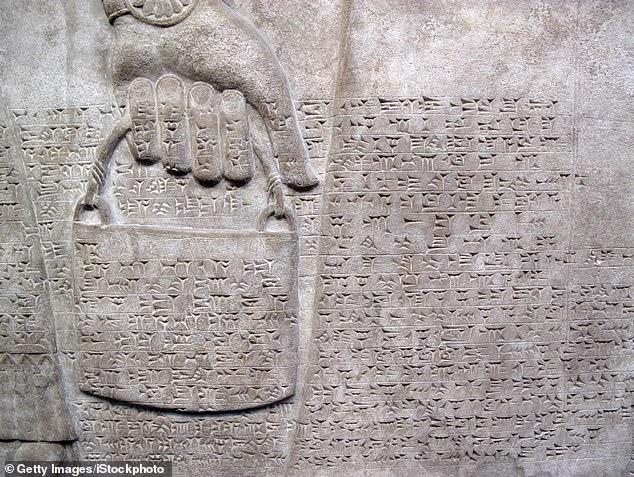
Many experts have agreed that it was made to carry magic potions that the genie would spread throughout the halls, but other translations have suggested that the art depicts a bag full of intoxicants.
The square “bag” may represent the Earth and the connected circle was a symbol of spirituality.
Ancient texts have shown that past civilizations believed the Earth was flat, which may be why they depicted it as a square in their art.
However, some researchers have argued that the design was the connection between our planet and the sky.
Another early example of a handbag has been found in ancient Egyptian hieroglyphics, made around 5,000 years ago, which show gods carrying a small, square bag that symbolised prosperity.
And while archaeologists have found evidence of baskets and tool bags used by the civilization, they have yet to uncover what has been found engraved on the walls.
Archaeologists have made similar discoveries in Iraq.
Giant rock slabs found among the ruins of an Assyrian palace built between 883 and 859 BC depict winged genies carrying a bag.
The structure features a genie with large feathered wings holding what some claim is a handbag, while others are certain it is a small bucket.
Many experts agree that it was made to contain magic potions that the genie would spread throughout the halls, but other translations suggest the art depicts a bag full of intoxicants.
Historian Dr. David Miano said in a recent article: Youtube video: ‘These figures in the Assyrian palaces They often have human bodies and animal heads, they are called Apkalu.
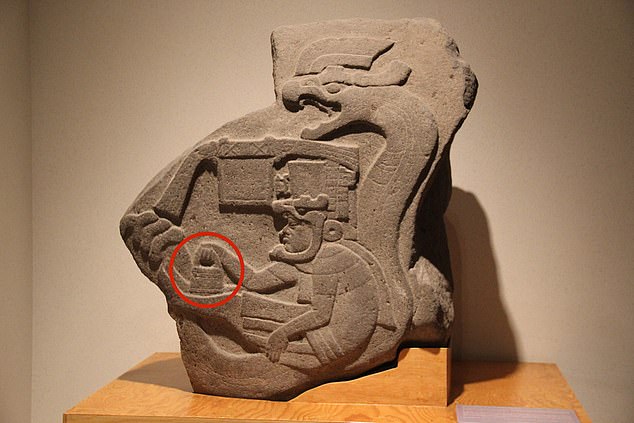
The same motif has also been found in Tula, Mexico, among ruins created by the Toltecs.
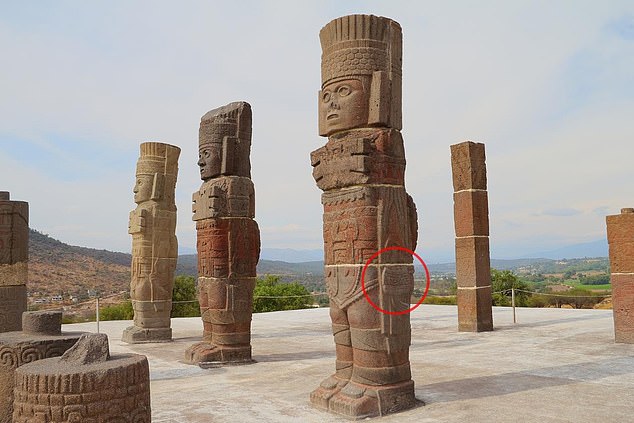
The giant stone statues at the top of the Star Pyramid depict figures holding a bag at their side; the structures were created in 750 AD.
He went on to explain that they are minor deities with the power to protect, which has been determined in ancient writings.
‘They carry these things that people call bags, but they’re actually buckets, these are buckets. Bring water ‘Sacred date palms,’ Dr Miano said, noting that archaeologists have found ancient cubes in Iraq that appear similar to the engravings.
He noted that archaeologists have discovered the royal cubes in the area.
The same motif has also been found in Tula, Mexico, among ruins created by the Toltecs, showing a human figure holding a bag while surrounded by a snake.
The giant stone statues at Tula also show figures holding a bag at their side: the structures were created in 750 AD.
“(A bag) is a very simple device, anyone could invent it,” Dr. Miano said.
“You don’t need to learn it from another culture, you can invent it yourself.”


